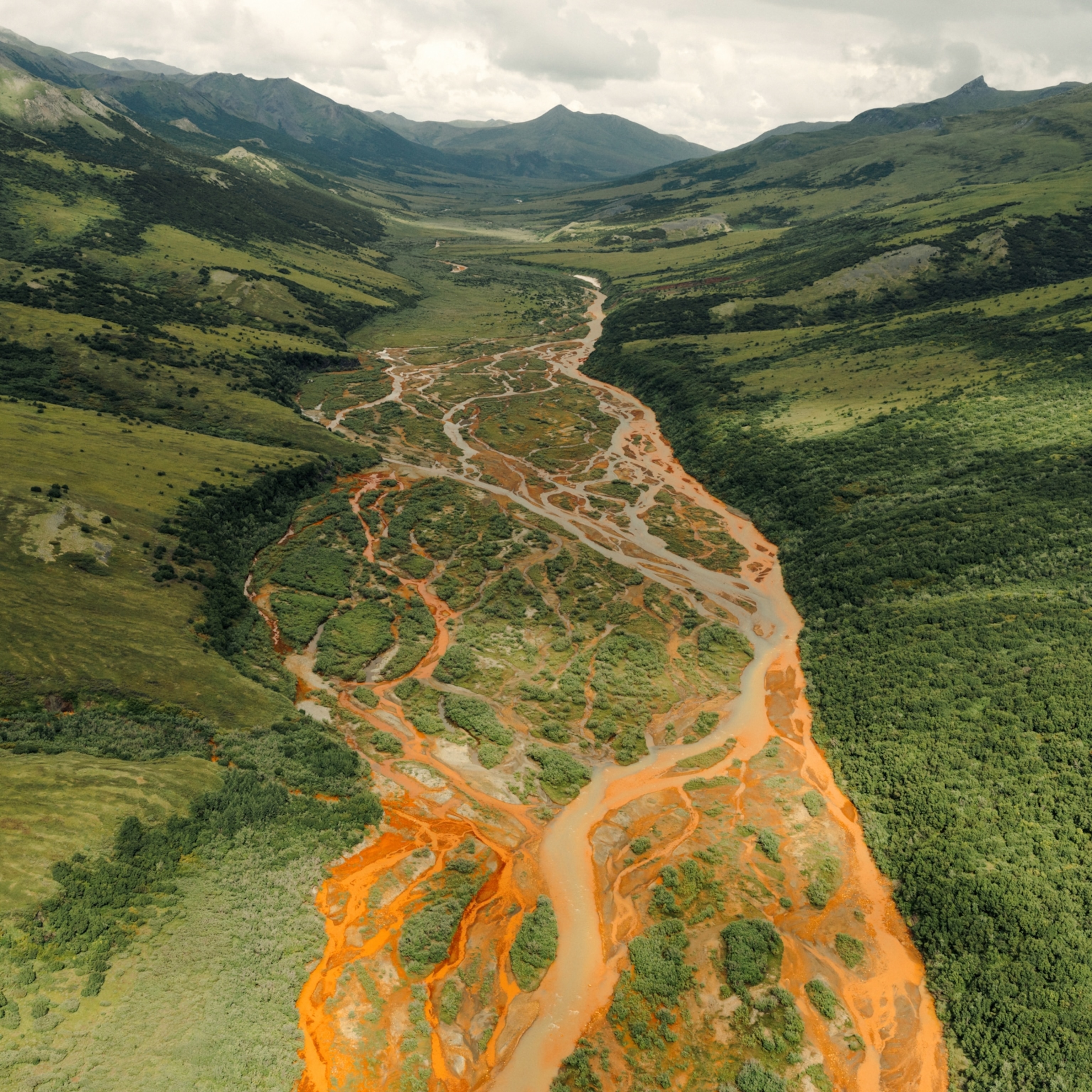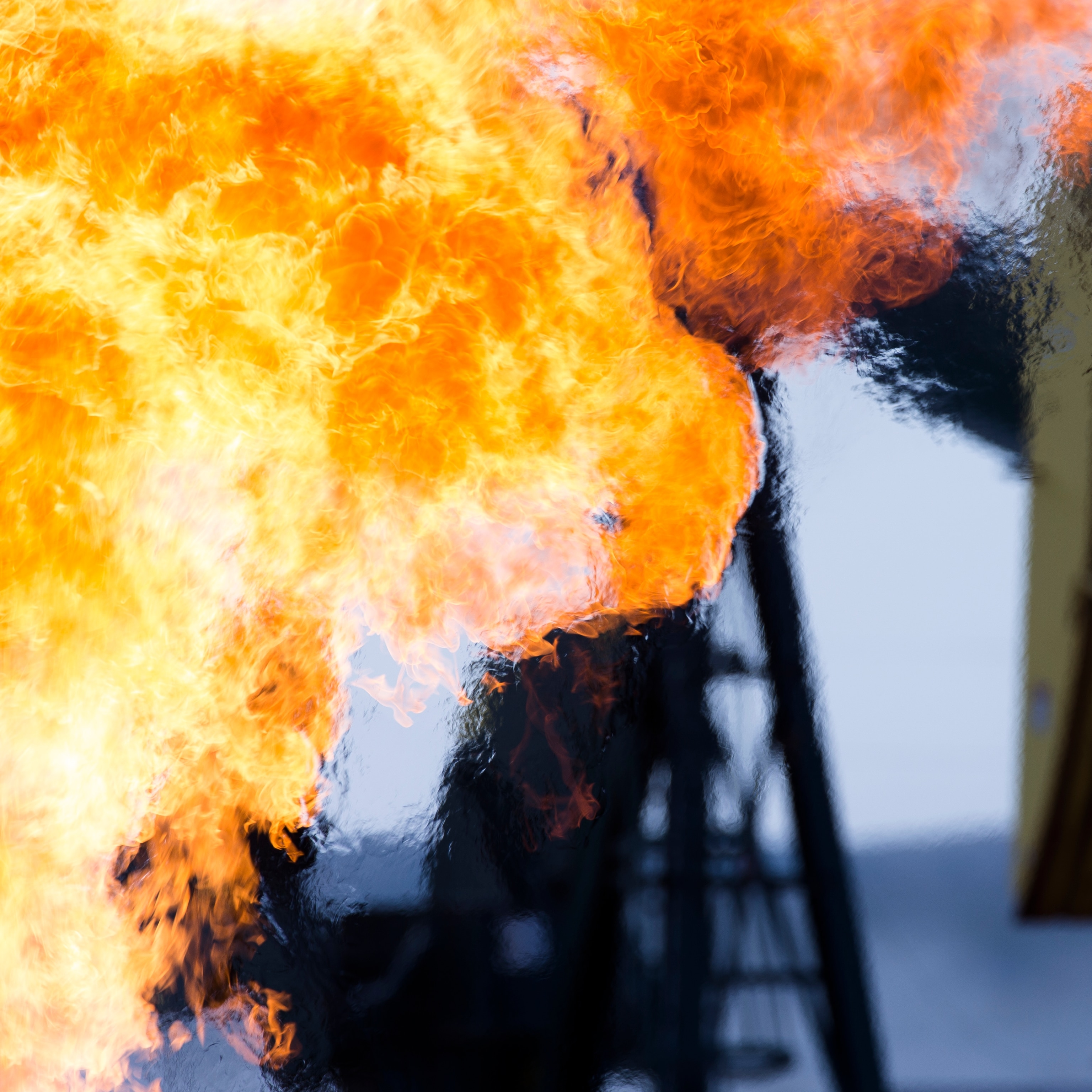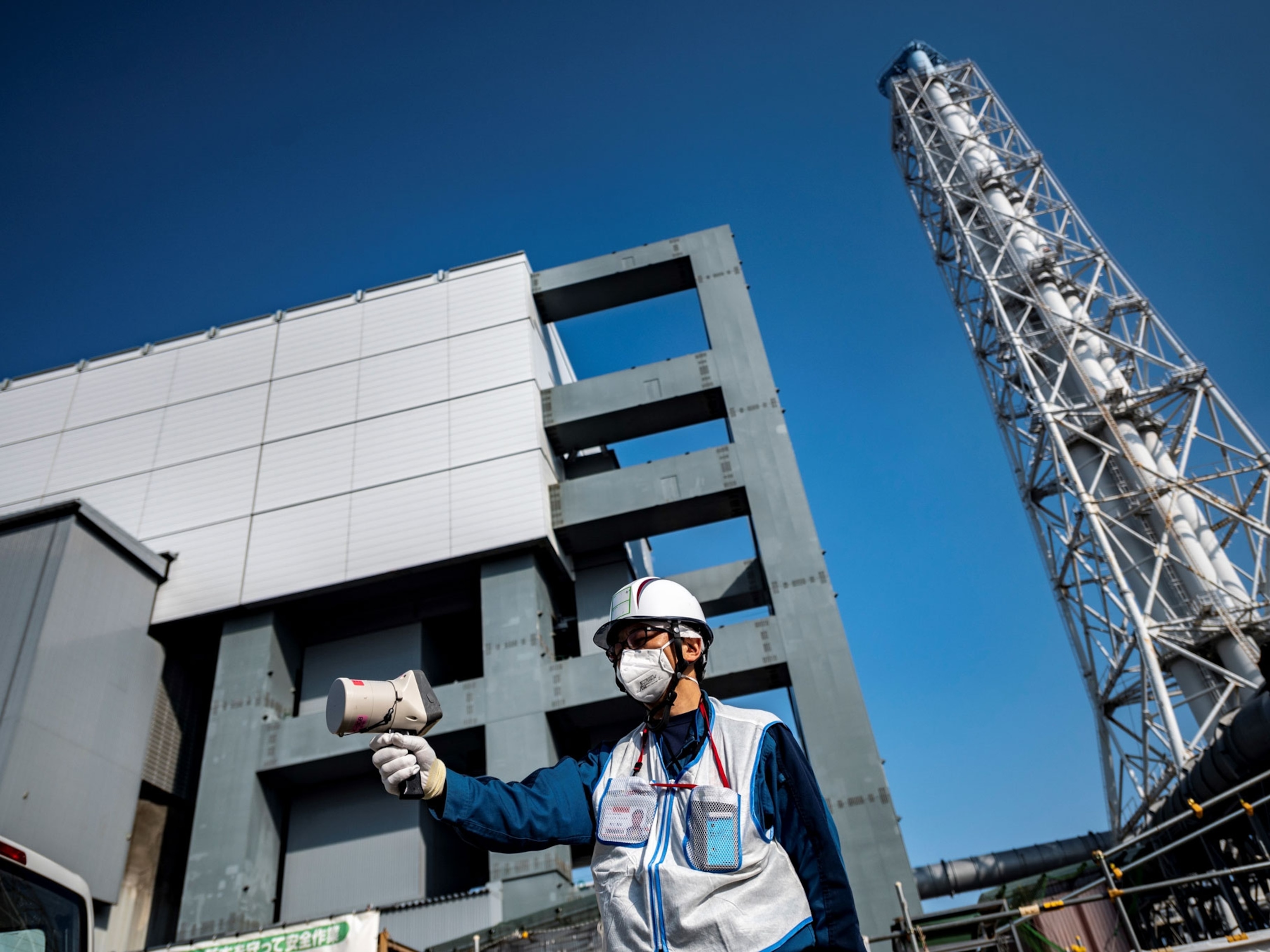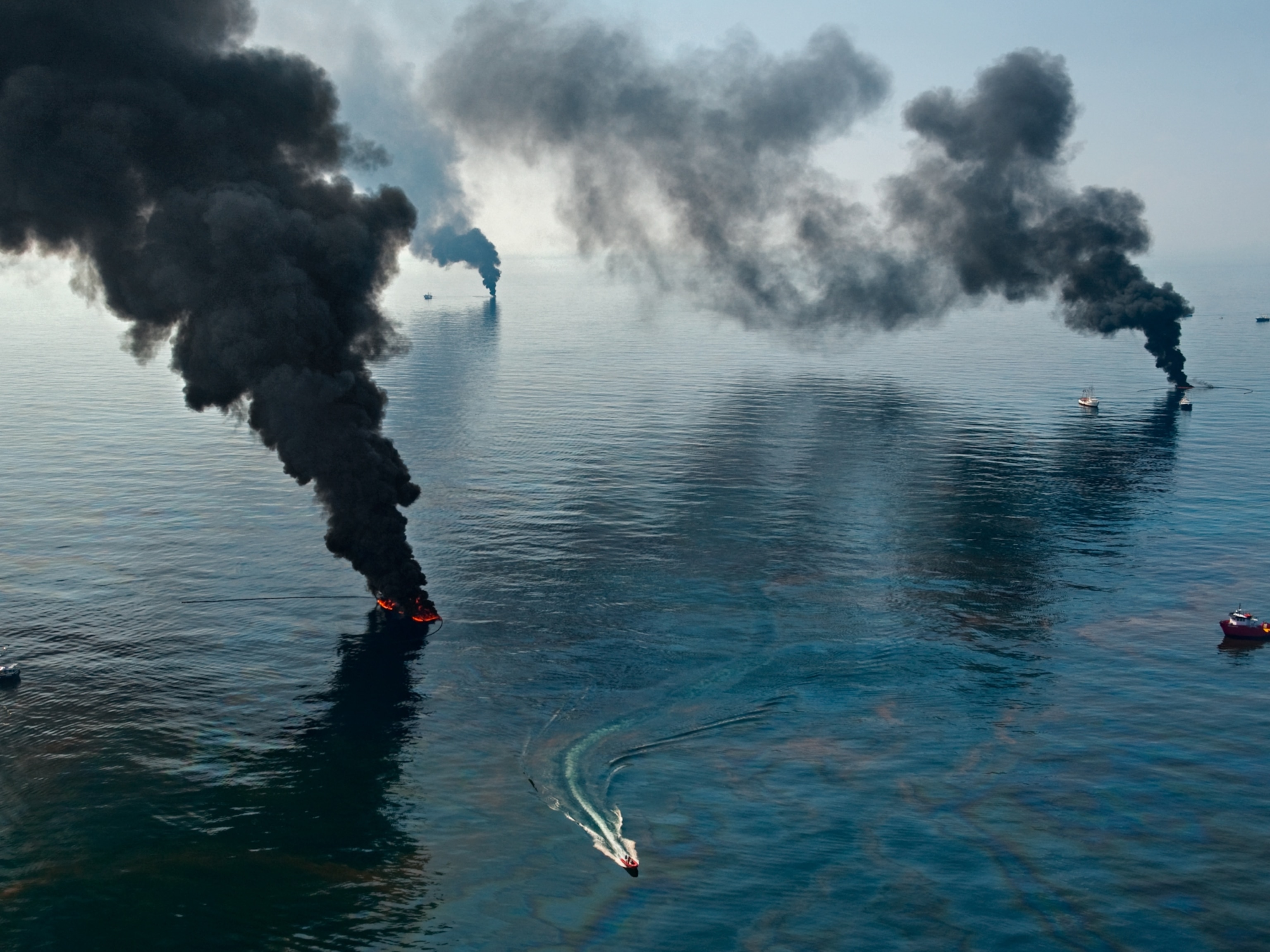
Predicting the World’s Next Water Pollution Disaster
From mining messes to hydraulic fracturing contamination
This story is part of a special National Geographic News series on global water issues.
When an estimated 184 million gallons (697 million liters) of industrial waste spilled into Hungary’s Marcal River in early October, arsenic and mercury threatened to taint water supplies and degrade rivers, both at the site and for hundreds of miles downstream. In some ways, Hungary’s toxic mud disaster was a wake-up call, shining a spotlight on potential water pollution hotspots around the globe. (Read more about the Hungary spill.)
Where might disaster strike next?
Mining Impacts
Only a tiny fraction of the ore miners exhume contains gold, copper, lead, zinc, or the other metals they’re after. The rest is waste, or tailings, full of large quantities of metals and minerals ranging from benign to very toxic. These fine-grained wastes are often held in tailings ponds that can cover many square miles.
Unfortunately the dams holding tailing ponds aren’t always examples of high-level engineering and, in some countries, may be made by simply bulldozing the tailings themselves into an embankment, explains geologist Johnnie Moore, of the University of Montana.
“There is the potential for huge amounts of [toxic waste] to move into a river system whenever any of those things break, and in fact it does happen,” he said.
Last summer a discharge of acidic waste escaped from a Fujan province copper plant run by China’s largest gold producer, Zijin Mining Group Co. The accident poisoned enough Ting River fish to feed 70,000 people for a year and also contaminated their water supply, according to reports from the Reuters news agency. Two years earlier, runoff from a gold mine near Dadong contaminated the water supply for more than 200,000 people. Over the years, similar disasters have occurred in Spain, Peru, the Philippines, and elsewhere, and there are plenty of other sites in China that scientists have their eye on.
Other toxic processes that use mercury and cyanide to extract valuable minerals from rock create the potential for environmental disaster as well.
In places like South America’s Amazon Basin, where a gold rush continues, centuries-old techniques that use mercury are still in widespread use. The mercury, which neurologists warn causes nervous system problems, paralysis, and even death when consumed through fish, binds with gold, creating an amalgam that can be separated from other objects in pans or big sluice boxes.
“Unfortunately people aren’t very careful with it,” said Moore.
In the process much of that mercury ends up directly in the water. As a result, the long-lasting element is building up in waterways, and the food chain, at ever-increasing concentrations that are impacting human health, even downstream.
Cyanide solution, another extraction method, is used on large leach pads to separate gold from ore and other materials. Ore is piled on a large pad, lined to prevent leakage, and “irrigated” by cyanide spray or drip systems. When such systems work properly, Moore said, the solutions are captured for reuse and environmental impact is minimal.
But, “if a cyanide pad breaks down, these materials can go rushing off into rivers,” explained Moore. “And there have been some big disasters, like Guyana in 1995, where these things have broken and flooded rivers, and because they are full of cyanide they kill everything in the river. These things definitely still happen.”
While preventing future disasters is a major concern, those of the past continue to contaminate rivers in the present.
The U.S. Environmental Protection Agency (EPA) estimates that 40 percent of all the watersheds in the western United States are impacted by mining pollution such as residual mercury and acid mine drainage—the acidic water that leaks from mines both active and long-abandoned when newly dug minerals are exposed to air and water.
Such problems are difficult or impossible to halt once the processes get going, and in some places remediation efforts must continue indefinitely.
“Here in Montana’s Clark Fork River Basin, after decades of work and millions of dollars of remediation there is still contamination in the floodplain. It will take thousands and thousands of years, even after all this effort, to get back to any kind of background level,” Moore said.
Coal Ash
Coal is a giant part of the world’s energy picture. Unfortunately when it’s burned it leaves behind a giant waste problem—coal combustion residuals, commonly known as coal ash.
When carbon is burned away to produce power toxic heavy metals like arsenic, cadmium, mercury, and thallium are left behind in highly concentrated forms throughout some 136 million tons of coal ash produced in the U.S. alone each year.
Much of that ash is landfilled in dry, lined compounds, but about a third of the nation’s coal ash storage sites are wet ponds.
““These are the ones that have the potential of a catastrophe such as we saw in Tennessee,” said Barbara Gottlieb, who directs the coal program Code Black for the Physicians for Social Responsibility.
In December 2008, an earthen dike at the Kingston, Tennessee, Fossil Plant failed, unleashing a billion-gallon sludge flood that buried homes and fields, swamped the Emory River, killed countless fish and other animals, and ignited anger and debate about the ecological and human health impacts of coal ash.
The Kingston site was not unique.
“EPA rates coal ash ponds in terms of potential for serous damage in case of a retaining wall rupture, and the possible damage or death to humans, ecosystems, and property values,” said Gottlieb. “They’ve identified 49 wet storage ponds [scattered across the country] as having a high hazard potential and another 19 as significant hazard potential.”
Even if those ponds don’t fail, environmentalists fear that over time they will leach containments into water systems.
But just how dangerous is coal ash? Industry groups, like the American Coal Ash Association stress that the substance isn’t currently considered a hazardous waste by the EPA. In fact, with government support, much of it is recycled into products like concrete, cement, wallboard, and construction fill.
Conrad Dan Volz, of the University of Pittsburgh’s Center for Healthy Environments and Communities, is among the many who believe the substance is hazardous.
“There are at least 20 peer reviewed scientific studies that clearly show that animals exposed to fly ash suffer genotoxic effects,” he said. “Salamanders, frogs, and toads have been shown to have arsenic levels hundreds of times those of background, which affect growth, reproduction, and survival. There are very serious environmental problems with coal ash that can’t be overlooked.”
Volz stressed that cleaner coal emission technologies have actually made the ash byproduct more toxic. “We can’t turn lead into gold,” he added. “If there’s so much arsenic or anything else in coal when you burn it, if it doesn’t go out the stack it becomes more concentrated in the ash. That’s the way it works, there’s no free ride.”
The Obama administration will soon come down on one side or another of the coal ash debate. Currently each state makes its own coal ash regulations, and they can vary widely from state to state. But two competing regulatory rules are under consideration at the federal level.
One would mandate federal disposal requirements for “hazardous” ash, while the other would label the ash non-hazardous and leave regulation to the states.
Could the massive clean-up response to the Tennessee spill tell which way the ruling might fall?
“Clearly the EPA knew that was very serious,” Gottlieb said. “Workers wore hazmat suits, families were relocated, and they even bulldozed parcels of saturated soils and trucked them away for disposal.”
(Related: "Coal Ash Continues to Pollute Groundwater.")
Gas and Oil Extraction
The drive to drill for critical new sources of oil and gas is in motion around the world, but nowhere is it more frenetic at the moment than in the Marcellus region, which sits above a 389-million-year-old rock formation cutting a 95,000 square-mile (246,000 square-kilometer) arc across West Virginia, Pennsylvania, and New York.
The site is home to a natural gas reserve of between 50 trillion and 500 trillion cubic feet, potentially second in size only to the Pars field of Iran and Qatar, and lies in the energy-hungry eastern United States.
Development of the natural gas reserves in the region is in its infancy. The benefits of extracting all that gas include an enormous boost to local economies and an important domestic source of energy that could provide power for decades. But the future of freshwater is high among environmental concerns associated with The Great Shale Gas Rush. And the University of Pittsburgh’s Conrad Dan Volz believes it stars with simply setting up the wells.
“People don’t think about it very often but there are serious erosion and sedimentation issues that go along with clearing three- to five-acre well pads. And in Pennsylvania alone they are talking about 100,000 wells or more over the next 20 to 30 years, in addition to the clearing of spaces for compressor stations, pipelines, and other infrastructure.”
Drilling also exposes sulfide-rich rock cuttings, Volz said, which once on the surface can react with air and water to produce a sulfuric solution somewhat akin to acid mine draining.
These aquatic impacts must be considered even when drilling proceeds according to plan. But, as oil spills in the Gulf and elsewhere have made quite clear, drilling does not always proceed according to plan.
“Every well has a potential to leak gas or oil over time,” Volz said, despite efforts to protect water supplies and prevent loss of gas by lining wells with steel and concrete casings. “Conduits for gas and liquid to escape and go into water aquifers appear over time everywhere oil and gas exploration occurs.”
Some residents and communities in shale regions have already experienced contaminated water, though it’s difficult to trace exactly where in the process such contaminations occurred.
Much scrutiny has been focused on the process that has recently made this mother lode of gas accessible—hydraulic fracturing or “fracking.” The technique blasts a cocktail of chemically laden water and sand into a well to create a mini-earthquake that fractures the shale and releases gas.
(Related: "Forcing Gas Out of Rock with Water.")
Fracking uses a lot of water, about 4 million gallons (15 million liters) of water for each frack. Some 20 to 50 percent of the watery fluid comes back out as ultra-salty brine that’s potentially laden with heavy metals. The Pennsylvania Department of Environmental Protection (DEP) has documented at least 130 spills since 2008.
The rest of the fluid stays deep in the shale layer at depths of 4,000 to 8,500 feet (1,220 to 2,590 meters). Industry officials say it’s harmless there and has never been proven to migrate back toward the surface, to the far shallower levels where drinking water wells are located—typically just several hundred feet below ground.
But the EPA seems less certain that the process is benign. The agency is currently conducting a peer-reviewed scientific study to investigate any possible relationships between the fracking process and drinking water.
“EPA agrees with Congress that there are serious concerns for citizens and their representatives about hydraulic fracturing’s potential impact on drinking water, human health, and the environment, which demands further study,” the agency notes on its website.
(Read more about the most extreme water pollution, drought, and flood events of 2010: "PHOTOS: 2010 a Watershed Year for Floods, Droughts.")
Rivers Run Toward an Uncertain Future?
“Rivers have been so critically important in history that we’ve overexploited them to a point now that the planet’s rivers are in crisis,” notes Texas Tech University toxicologist Ronald Kendall. “You have to go to remote areas like Siberia and Scandinavia to find great rivers that aren’t as impacted.”
Toxic threats such as mining tailings and coal ash are joined by many others, some inevitable and others largely preventable.
“The Yangtze is threatened by industrial pollution,” Kendall explained. “Infrastructure development on the Danube has destroyed wetlands and floodplains—that’s why the flooding issue is so critical there right now. We’re just overextracting water on the Rio Grande and the Colorado doesn’t even make it to its delta any more.”
But while the present picture is one of compromised water quality around the globe, Kendall stressed, the future doesn’t have to be that way if river systems are respected and protected.
“If you can cease the polluting and the over exploitation, nature can do a wonderful job in healing itself.”
(See the legacy of a lasting water pollution problem in Russia: "PHOTOS: Russia's Radioactive River.")








